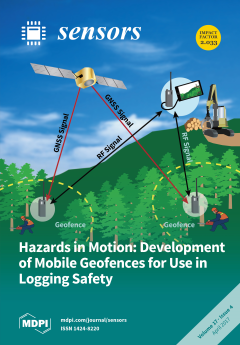A power MOSFET linearizer is proposed for a high-voltage power amplifier (HVPA) used in high-frequency pulse-echo instrumentation. The power MOSFET linearizer is composed of a DC bias-controlled series power MOSFET shunt with parallel inductors and capacitors. The proposed scheme is designed to improve the gain deviation characteristics of the HVPA at higher input powers. By controlling the MOSFET bias voltage in the linearizer, the gain reduction into the HVPA was compensated, thereby reducing the echo harmonic distortion components generated by the ultrasonic transducers. In order to verify the performance improvement of the HVPA implementing the power MOSFET linearizer, we measured and found that the gain deviation of the power MOSFET linearizer integrated with HVPA under 10 V DC bias voltage was reduced (−1.8 and −0.96 dB, respectively) compared to that of the HVPA without the power MOSFET linearizer (−2.95 and −3.0 dB, respectively) when 70 and 80 MHz, three-cycle, and 26 dB
m input pulse waveforms are applied, respectively. The input 1-dB compression point (an index of linearity) of the HVPA with power MOSFET linearizer (24.17 and 26.19 dB
m at 70 and 80 MHz, respectively) at 10 V DC bias voltage was increased compared to that of HVPA without the power MOSFET linearizer (22.03 and 22.13 dB
m at 70 and 80 MHz, respectively). To further verify the reduction of the echo harmonic distortion components generated by the ultrasonic transducers, the pulse-echo responses in the pulse-echo instrumentation were compared when using HVPA with and without the power MOSFET linearizer. When three-cycle 26 dB
m input power was applied, the second, third, fourth, and fifth harmonic distortion components of a 75 MHz transducer driven by the HVPA with power MOSFET linearizer (−48.34, −44.21, −48.34, and −46.56 dB, respectively) were lower than that of the HVPA without the power MOSFET linearizer (−45.61, −41.57, −45.01, and −45.51 dB, respectively). When five-cycle 20 dB
m input power was applied, the second, third, fourth, and fifth harmonic distortions of the HVPA with the power MOSFET linearizer (−41.54, −41.80, −48.86, and −46.27 dB, respectively) were also lower than that of the HVPA without the power MOSFET linearizer (−25.85, −43.56, −49.04, and −49.24 dB, respectively). Therefore, we conclude that the power MOSFET linearizer could reduce gain deviation of the HVPA, thus reducing the echo signal harmonic distortions generated by the high-frequency ultrasonic transducers in pulse-echo instrumentation.
Full article






